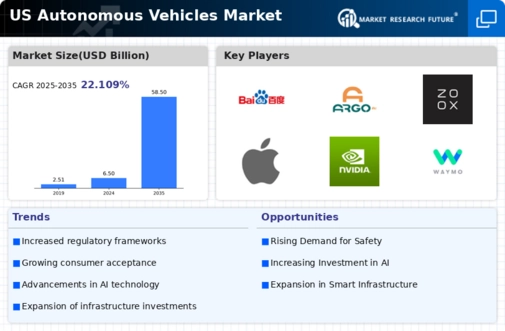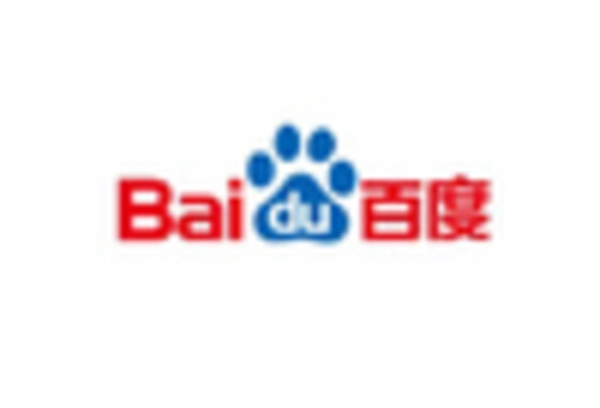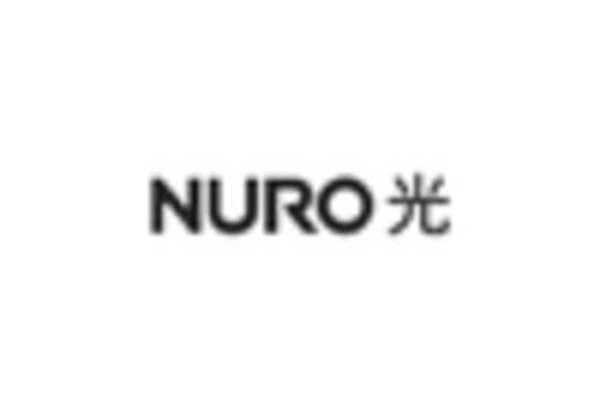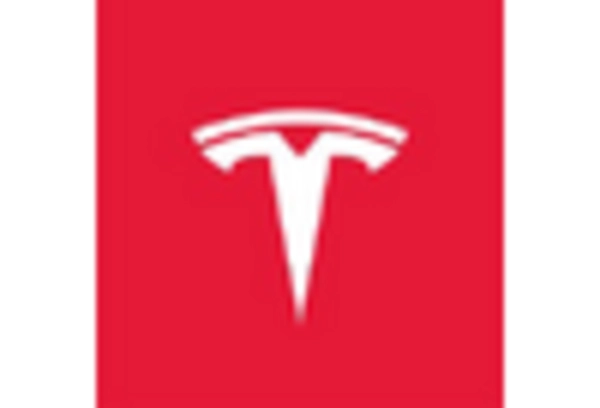Evolving Urban Mobility Solutions
The evolution of urban mobility solutions is a significant driver for the autonomous vehicles market. As cities grapple with congestion and limited parking, there is a growing interest in shared mobility services that utilize autonomous technology. Ride-sharing platforms are increasingly exploring autonomous vehicles to enhance service efficiency and reduce operational costs. According to industry estimates, the ride-sharing market is expected to grow to $200 billion by 2026, with a substantial portion attributed to autonomous vehicles. This trend suggests that the integration of autonomous technology into urban mobility solutions could reshape transportation dynamics, further propelling the autonomous vehicles market.
Rising Demand for Safety Features
The increasing emphasis on safety in the automotive sector is a primary driver for the autonomous vehicles market. Consumers are becoming more aware of the potential for accidents and fatalities associated with traditional driving. As a result, there is a growing demand for vehicles equipped with advanced safety features, such as automatic emergency braking and lane-keeping assistance. According to recent data, nearly 70% of consumers express a preference for vehicles with autonomous capabilities, viewing them as safer alternatives. This trend is likely to propel the autonomous vehicles market forward, as manufacturers respond to consumer demands by integrating cutting-edge safety technologies into their offerings.
Investment in Infrastructure Development
Investment in infrastructure is crucial for the growth of the autonomous vehicles market. The US government has been allocating substantial funds to enhance road networks and implement smart traffic management systems. For instance, the Infrastructure Investment and Jobs Act has earmarked billions for transportation improvements, which include the development of dedicated lanes for autonomous vehicles. This investment is expected to facilitate smoother integration of autonomous vehicles into existing traffic systems, thereby enhancing their viability and appeal. As infrastructure improves, the autonomous vehicles market is likely to experience accelerated growth, driven by increased operational efficiency and reduced congestion.
Environmental Concerns and Sustainability
Environmental concerns are increasingly shaping consumer preferences and regulatory frameworks, thereby impacting the autonomous vehicles market. With growing awareness of climate change and pollution, there is a push for cleaner transportation solutions. Autonomous vehicles, particularly electric ones, are seen as a viable option to reduce carbon emissions. The US government has set ambitious targets to cut greenhouse gas emissions, which may lead to incentives for adopting electric autonomous vehicles. This shift towards sustainability is likely to drive demand in the autonomous vehicles market, as consumers seek eco-friendly alternatives that align with their values.
Technological Innovations in AI and Machine Learning
Technological innovations in artificial intelligence (AI) and machine learning are significantly influencing the autonomous vehicles market. These advancements enable vehicles to process vast amounts of data in real-time, improving decision-making capabilities and overall performance. Companies are investing heavily in R&D to enhance the algorithms that power autonomous systems. For example, the market for AI in the automotive sector is projected to reach $15 billion by 2027, indicating a robust growth trajectory. As these technologies continue to evolve, they are expected to enhance the functionality and reliability of autonomous vehicles, thereby attracting more consumers and businesses to the market.
















Leave a Comment